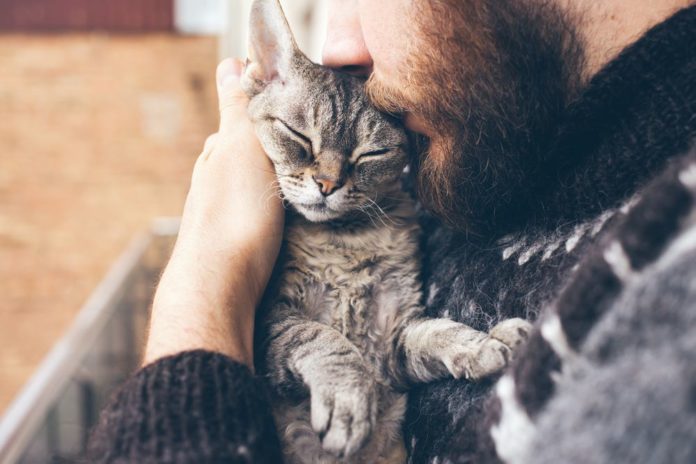Worldwide, domestic cats outnumber domestic dogs. Besides, cats’ success in human environments, dog social cognition has received considerably more scientific attention over the last several decades. A key part of what has been said to make dogs unique is their proclivity for forming attachment bonds, including secure attachments to humans.
Cats can also be seen living in social groups or solitarily, depending on early developmental factors, resource distribution, and lifetime experiences such as human interaction. A new study used behavioral criteria established in the human infant literature, and found that cats also display distinct attachment styles toward human caregivers.
The study conducted by the scientists from Oregon State University suggests that cats display the same main attachment styles as babies and dogs.
A lead author Kristyn Vitale, a researcher in the Human-Animal Interaction Lab in OSU’s College of Agricultural Sciences said, “In both dogs and cats, attachment to humans may represent an adaptation of the offspring-caretaker bond. Attachment is a biologically relevant behavior. Our study indicates that when cats live in a state of dependency with a human, that attachment behavior is flexible and the majority of cats use humans as a source of comfort.”
During the study, cats and owners participated in a Secure Base Test (SBT), an abbreviated strange situation test used to evaluate attachment security in primates and dogs. During this test, the subject spends 2 minutes in a novel room with their caregiver, followed by a 2-minute alone phase, and then a 2-minute reunion phase.
Upon the caregiver’s return from the two-minute absence, cats with secure attachment to the person are less stressed and they balance their attention between the person and their surroundings. For example, they continue to explore the room. On the other hand, cats with an insecure attachment show signs of stress such as twitching their tail and licking their lips, and either stay away from the person (avoidance) or cling to them by jumping in their lap and not moving (ambivalence).
Behavioral experts watched recordings of the tests and classified the animal’s actions on criteria that have been used to describe attachment patterns in infants and dogs. Of the 70 kittens that were classifiable, 64.3% were sorted as safely joined and 35.7% were categorized as insecurely attached.
Scientists later discovered if socialization training would change those percentages. After a six-week training course, they didn’t found any significant differences.
Vitale said, “Cats, like most domesticated animals, retain several juvenile traits into maturity and remain dependent on humans for care. Thus, we tested 38 cats that were 1 year old or older. The percentages nearly mirrored the kitten population – 65.8% secure and 34.2% insecure.”
“It was surprising, to find how closely the proportion of secure and insecure attachments in the kitten and adult cat populations matched the human infant population. In humans, 65% of infants are securely attached to their caregiver.”
“Cats that are insecure can be likely to run and hide or seem to act aloof. There’s long been a biased way of thinking that all cats behave this way. But the majority of cats use their owner as a source of security. Your cat is depending on you to feel secure when they are stressed out.”
Co-authors on the study were Monique Udell, assistant professor in OSU’s Department of Animal and Rangeland Sciences and director of the Human-Animal Interaction Lab; and Alexandra Behnke, a veterinary student at OSU.
The study published today in the journal Current Biology.
